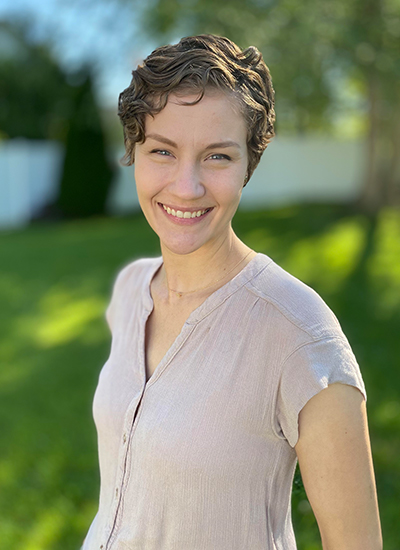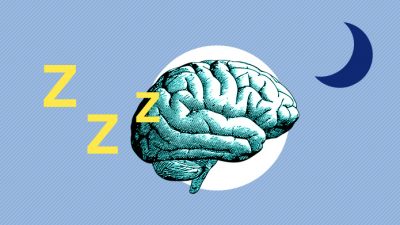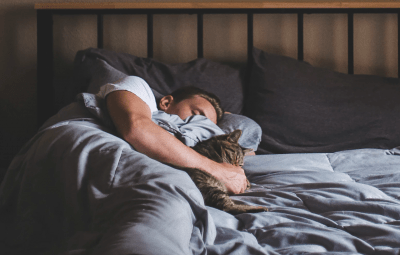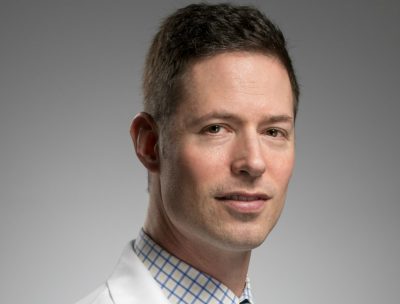Table of Contents
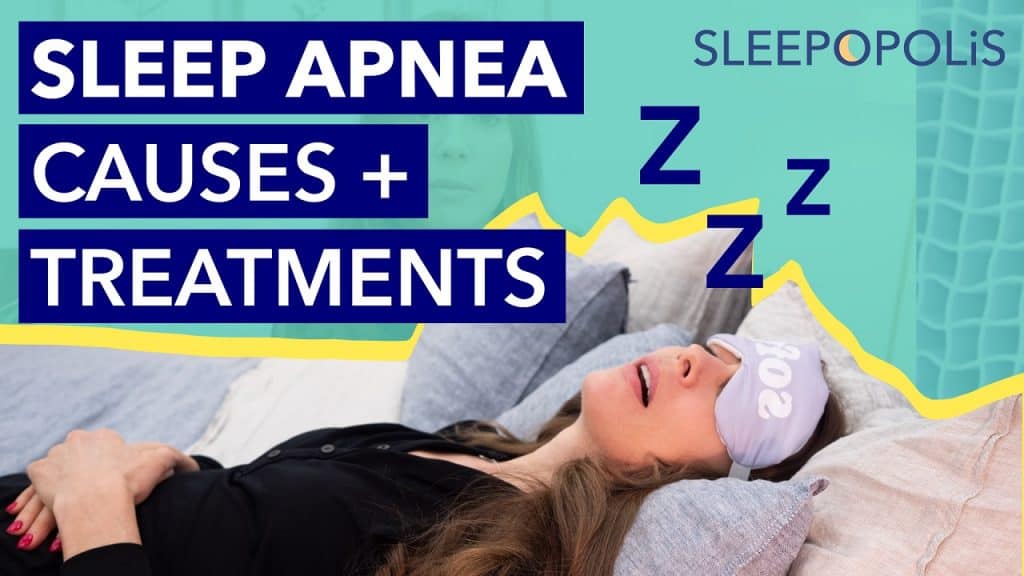
What would you do if you suddenly stopped breathing right in the middle of an afternoon meeting? Or with your kids at a park? You would likely be alarmed, to say the least. But when you have sleep apnea, you sleep right through short cessations in breath multiple times a night.
During a sleep apnea episode, your breathing pauses throughout the night. Your body catches on to the problem pretty quick and gets you breathing again, but these pauses can make your oxygen levels dip and disrupt healthy sleep patterns. (1)
For some, these pauses are obvious thanks to loud gasps, while others may show no outward signs this is happening. (1) Either way, sleep apnea is very common: almost 40 million Americans have a sleep apnea diagnosis, and experts think many go undiagnosed. (2)
Wondering if you’re one of those who have undiagnosed sleep apnea may induce some anxiety, but you have plenty of options for treatment to keep your breathing and slumber steady all night.
Note: The content on Sleepopolis is meant to be informative in nature, but it shouldn’t be taken as medical advice, and it shouldn’t take the place of medical advice and supervision from a trained professional. If you feel you may be suffering from any sleep disorder or medical condition, please see your healthcare provider immediately.
Long Story Short
- Sleep apnea comes in three types: obstructive, central, and complex, but the most common is obstructive sleep apnea.
- Sleep apnea causes multiple pauses in breathing throughout the night while you sleep, which can lead to symptoms like gasping for breath, daytime sleepiness, and headaches.
- Sleep studies are the gold standard for diagnosing sleep apnea, and CPAP (continuous positive airway pressure) devices are the most recommended treatment.
What Is Sleep Apnea?
Let’s get down to the nitty gritty: what is sleep apnea, exactly? “Sleep apnea is a breathing disorder,” says Audrey Wells, MD, sleep expert and founder of Super Sleep MD. But not all sleep apnea looks the same — there are a few different types.
Obstructive versus Central
Experts categorize sleep apnea into two distinct categories, with a third type describing a mashup of the other two. Here’s how that looks:
- Obstructive sleep apnea: Your airways (the pathway from your mouth to your lungs) get blocked during the night, so air can’t get in. (1)
- Central sleep apnea: Your brain periodically stops sending messages to your breathing muscles. (3)
- Complex sleep apnea: This type happens when you develop central sleep apnea while being treated for the obstructive type. (4)
Obstructive sleep apnea, or OSA, is by far the most common type of the three, so we’ll spend most of our time talking about it over the others. (3) (4)
Sleep Apnea Episodes
When you fall asleep, all your muscles relax — including the muscles around your throat, says Wells. (1) During an obstructive sleep apnea episode, this relaxation drops those floppy tissues right into your airway, blocking air from getting through, says Joel Provenzano, MD, a pulmonary care and critical care physician based in Marion, OH. “Your body then has to wake you up to open up your airway to start breathing again.” This wake-up can involve loud gasps, grunts, and snorts. (1)
Sleep Apnea Symptoms
So, what does all this breath-pausing do to you? The sleep interruptions and lower oxygen that come with sleep apnea can have quite a few effects, some more noticeable than others.
Most people with sleep apnea (94 percent) snore in their sleep.(2) Beyond that, the most common symptoms of sleep apnea are fatigue and excessive daytime sleepiness, says Provenzano. “This is because even in mild sleep apnea you are waking up every 8 to 10 minutes and are not maintaining sleep long enough to get into the deep, restful, restorative stages of sleep.”
As a result, many people with OSA also report: (1)
- Irritability
- Forgetfulness
- Falling asleep easily through the day
- Persistent headaches
While snoring and sleepiness are common, you can have sleep apnea without these symptoms, says Wells.
Central sleep apnea (CSA) symptoms look mostly the same as those experienced in OSA, but snoring can be less common.(3)
What Causes Sleep Apnea?
Sleep apnea can have many causes, and this is where obstructive and central sleep apnea look different.
Obstructive Sleep Apnea Causes and Risk Factors
Muscle relaxation during sleep is the primary cause for breath interruption in OSA. (1) But everyone gets sleep-induced floppy muscles, so why doesn’t everyone have this problem? Because people with OSA usually have some other risk factors at play, like: (1)
- A short lower jaw
- Different palate (roof of your mouth) shapes
- Large neck diameter
- Large tongue
- Excess body weight
When you gain weight, you gain it everywhere — even in your tongue and around your neck, and that extra tissue can make it easier to block off your airway while you sleep. (1) (5)
Central Sleep Apnea Causes
Central sleep apnea, on the other hand, isn’t a blockage issue, but a brain issue. Quite a few conditions can cause a miscommunication between your brain and breathing muscles, including: (3)
- Heart failure
- Respiratory depression (usually from narcotic medications)
- End-stage kidney failure
- Neurological conditions such as a stroke, brain tumor, or degenerative neurological disorders
Some of those conditions may seem daunting, but there are other, less serious causes, too — high altitudes can prompt CSA, and sometimes the cause remains a mystery. But no matter the cause, you are at a higher risk for CSA if you’re a man and/or over the age of 60. (3)
Diagnosing Sleep Apnea
Whether your partner shoves you all night for your raucous snores, or you feel sleepy all day after a “full night of sleep,” it’s important to get any sleep apnea symptoms checked out. Check out some of the important steps below.
Health History
First, your healthcare provider will want to hear about your health history and do a physical exam. (1) Sleep apnea runs in families, says Provenzano, so your provider will also want to know if anyone in your family has sleep apnea. After this, for all types of sleep apnea, the go-to method for diagnosis is a sleep study. (6)
Sleep Study
Sleep studies can be done at home or in a lab, says Wells. In a sleep lab study, you spend the night in a medical facility with sensors on your scalp, face, chest, limbs, and one finger. While you sleep, staff monitor your heart rate, breathing, oxygen level, muscle movements, and brain waves. (7)
Your brain waves morph as you flow through cycles of the four sleep stages (light sleep to deep sleep), so measuring these waves give your provider clues to your sleeping patterns. (8)
Home sleep studies have fewer bells and whistles, and typically measure just your breathing and oxygen levels on a portable device. (9) These more simple studies can be convenient, but they’re only helpful if they come back positive, says Wells. “If the home sleep apnea test is done for a person who has symptoms of sleep apnea but it comes back negative, I would prefer to call that inconclusive because it may not be sensitive enough to pick up the condition.”
In other words, if you get a “no sleep apnea” result from a home sleep study, Wells recommends getting a sleep lab study to be sure.
The Impact of Untreated Sleep Apnea
Pursuing a sleep apnea diagnosis may feel like a colossal pain in the neck, but the inconvenience is worth it. Untreated sleep apnea can disrupt your sleep, and chronic poor sleep leads to all sorts of no-fun symptoms and conditions.
In the short term, untreated sleep apnea may cause mental health issues, low libido, daytime sleepiness, and less-than-stellar work and school performance. (1) (3)
If left untreated long term, sleep apnea can cause or worsen heart disease, putting you at risk for arrhythmias, heart failure, heart attack, high blood pressure, and stroke. (1) Additionally, some research shows untreated sleep apnea may also be linked to early-onset dementia, says Provenzano.
Some people can go years with sleep apnea before they notice any symptoms or long-term effects, says Wells, but typically you’ll see the signs within a year.
We’ll dig into this more below, but it’s important to remember that sleep apnea is extremely treatable, meaning you can very likely avoid any of the above symptoms by getting proper treatment.
Sleep Apnea In Children
All of our brains need oxygen to function well, but in a child’s developing brain, oxygen is even more important, says Wells. Sleep apnea in children looks slightly different from adults. (10)
Children three to ten years old have softer airways and are more prone to blockage by tonsils, says Wells. “And so just the volume of the tonsils is enough to obstruct a small and flexible airway,” she adds, whereas adults rarely have blockage from tonsils.
In one shared risk factor, weight can play a role in childhood sleep apnea. (10) The rate of childhood obesity has increased steadily over the past 20 years, with childhood OSA also on the rise. (11)
Wells says sleep apnea treatment in children typically involves having their tonsils removed, which can be very effective. If the child is overweight, however, they may need a follow up sleep study to see if further treatment is needed, she adds.
Sleep Apnea Treatment
Now that you know everything you ever wanted (and didn’t want) to know about sleep apnea, we can talk about solutions. For central sleep apnea, treatments typically revolve around its underlying cause. (6)
For OSA, though, treatment can include a mix of lifestyle changes and medical options.
Lifestyle Changes as Sleep Apnea Treatment
Some of our favorite habits can unfortunately help sleep apnea do its thing. For example, it’s best to avoid alcohol and medicines that make you sleepy, which can sometimes make apnea symptoms worse.
Sleeping on your back gives gravity a leg up — this sleeping position can let more tissue fall back into your airway. (1) If you can get used to sleeping on your side or with your head elevated, you may be able to lessen symptoms, although these changes can’t replace other treatments. (12)
Some providers recommend weight loss for sleep apnea, and it certainly can’t hurt. “Studies have shown that significant weight loss can only ‘cure’ very mild sleep apnea, though losing weight can make sleep apnea less severe,” says Provenzano.
Non-Surgical Sleep Apnea Treatment
“The mainstay and gold standard of treating sleep apnea is PAP (positive airway pressure) therapy,” says Provenzano, which is usually offered via a CPAP (continuous positive airway pressure) device.
A CPAP machine works by blowing a pressurized column of air into your airway all night, which keeps your breathing and sleeping uninterrupted. (13) To use CPAP, you wear a mask over your nose and mouth (or just your nose) at night while you sleep. This mask connects via a hose to a machine near your bed, which pumps the pressured air while you sleep. (13)
Providers recommend CPAP as a first line treatment because it’s non-invasive and can be customized, says Wells. “It works more than 95 times out of 100. But the trick is you have to use it,” she adds. That may sound simple, but compliance rates aren’t historically super high, often because of discomfort. (14) Luckily, CPAPs have changed quite a bit in recent years.
“CPAP therapy has come a long way over the last several years to where the machines are smaller, quieter, and now even can auto-adjust through the night so you never get too much or too little air,” says Provenzano, who says you have a lot more options for mask styles and headgear now, so you can find the one that fits most comfortably.
These positive changes in CPAP gear are important because they help people stick with it. “It really can change lives,” says Provenzano.
If you can’t tolerate a CPAP no matter how hard you try, Wells recommends using a dental device, which pushes your lower jaw forward and pulls tissues away from your throat. Although not as effective as CPAP, Wells says, custom-fit devices offered by a healthcare provider can help decrease sleep apnea episodes.
Surgical Sleep Apnea Treatment
Over the years, experts have searched for various sleep apnea surgical fixes, and hypoglossal nerve stimulation (HNS) is an effective surgical treatment option, says Wells. (15)
In this procedure, a surgeon places a device under the skin of your chest (similar to a pacemaker) and threads connected sensors that deliver electrical impulses to your hypoglossal nerve, AKA the nerve that makes your tongue tense up. With this gadget running, you stay asleep, but your tongue can’t relax back into your throat. (16)
Though not overly common, other surgeries combat sleep apnea by: (1)
- Removing extra throat tissue
- Adjusting your palate or other facial structures
- Removing your tonsils and adenoids (a patch of tissue high in the throat) (17)
Another surgical option, called maxillomandibular advancement (MMA) surgery, removes portions of your jawbone. It may sound intense, but research says it’s also an effective surgical treatment for OSA, with an 85 percent success rate. (18)
For those who have tried CPAP and other treatments, surgery can be a good option, under the direction of your provider. But keep in mind, surgery doesn’t guarantee a cure, and CPAP therapy remains the best option if possible. (1)
When to See a Doctor
As you’ve read, sleep apnea isn’t something you want to ignore. A healthcare provider can help you figure out if you have sleep apnea, which type you have, and how best to treat it.
With that in mind, be sure to contact your provider if you snore regularly while sleeping, you wake up gasping through the night, or you feel exhausted and sleepy during the day, even after getting “enough” sleep. (1)
FAQs
Are there medications for sleep apnea?
One study review found a medication called acetazolamide improved both OSA and CSA when taken short-term. (19) Dr. Wells doesn’t yet recommend any medications for sleep apnea, but she says this may be a new development in the next year or two.
The Last Word From Sleepopolis
Sleep apnea may sound scary, but consistent treatment can have you back on track and sleeping great! Some report difficulty getting used to CPAP, but once they do, they say they’ve never felt better, says Wells. No matter your treatment path, stick with it, let your provider know about any new symptoms, and enjoy better rest and a healthier you!
Sources
- Obstructive sleep apnea – adults: MedlinePlus Medical Encyclopedia. Accessed April 1, 2024. https://medlineplus.gov/ency/article/000811.htm
- Sleep Apnea Statistics and Facts You Should Know. Accessed February 6, 2024. https://www.ncoa.org/adviser/sleep/sleep-apnea-statistics/
- Central sleep apnea – Symptoms and causes – Mayo Clinic. Accessed April 1, 2024. https://www.mayoclinic.org/diseases-conditions/central-sleep-apnea/symptoms-causes/syc-20352109
- Roberts EG, Raphelson JR, Orr JE, LaBuzetta JN, Malhotra A. The Pathogenesis of Central and Complex Sleep Apnea. Curr Neurol Neurosci Rep. 2022;22(7):405-412. doi:10.1007/s11910-022-01199-2
- de Athayde RAB, Colonna LLI, Schorr F, Gebrim EMMS, Lorenzi-Filho G, Genta PR. Tongue size matters: revisiting the Mallampati classification system in patients with obstructive sleep apnea. J Bras Pneumol. 49(2):e20220402. doi:10.36416/1806-3756/e20220402
- Central sleep apnea – Diagnosis and treatment – Mayo Clinic. Accessed April 1, 2024. https://www.mayoclinic.org/diseases-conditions/central-sleep-apnea/diagnosis-treatment/drc-20352114
- Sleep Studies – Sleep Studies | NHLBI, NIH. Accessed April 1, 2024. https://www.nhlbi.nih.gov/health/sleep-studies
- Patel AK, Reddy V, Shumway KR, Araujo JF. Physiology, Sleep Stages. In: StatPearls. StatPearls Publishing; 2023. Accessed January 6, 2024. http://www.ncbi.nlm.nih.gov/books/NBK526132/
- What to Know About an At-Home Sleep Test | Johns Hopkins Medicine. Accessed April 1, 2024. https://www.hopkinsmedicine.org/health/wellness-and-prevention/what-to-know-about-an-at-home-sleep-test
- Pediatric sleep apnea: MedlinePlus Medical Encyclopedia. Accessed April 1, 2024. https://medlineplus.gov/ency/article/007660.htm
- Park JW, Hamoda MM, Almeida FR, et al. Socioeconomic inequalities in pediatric obstructive sleep apnea. Journal of Clinical Sleep Medicine. 18(2):637-645. doi:10.5664/jcsm.9494
- Srijithesh PR, Aghoram R, Goel A, Dhanya J. Positional therapy for obstructive sleep apnoea. Cochrane Database Syst Rev. 2019;2019(5):CD010990. doi:10.1002/14651858.CD010990.pub2
- Positive airway pressure treatment: MedlinePlus Medical Encyclopedia. Accessed April 1, 2024. https://medlineplus.gov/ency/article/001916.htm
- Qiao M, Xie Y, Wolff A, Kwon J. Long term adherence to continuous positive Airway pressure in mild obstructive sleep apnea. BMC Pulmonary Medicine. 2023;23(1):320. doi:10.1186/s12890-023-02612-3
- Kompelli AR, Ni JS, Nguyen SA, Lentsch EJ, Neskey DM, Meyer TA. The outcomes of hypoglossal nerve stimulation in the management of OSA: A systematic review and meta-analysis. World J Otorhinolaryngol Head Neck Surg. 2018;5(1):41-48. doi:10.1016/j.wjorl.2018.04.006
- Mashaqi S, Patel SI, Combs D, et al. The Hypoglossal Nerve Stimulation as a Novel Therapy for Treating Obstructive Sleep Apnea—A Literature Review. International Journal of Environmental Research and Public Health. 2021;18(4):1642. doi:10.3390/ijerph18041642
- Adenoids | Enlarged Adenoids | Adenoid Removal | MedlinePlus. Accessed April 1, 2024. https://medlineplus.gov/adenoids.html
- Ho JPTF, Zhou N, van Riet TCT, Schreurs R, Becking AG, de Lange J. Assessment of Surgical Accuracy in Maxillomandibular Advancement Surgery for Obstructive Sleep Apnea: A Preliminary Analysis. Journal of Personalized Medicine. 2023;13(10):1517. doi:10.3390/jpm13101517
- Schmickl CN, Landry SA, Orr JE, et al. Acetazolamide for OSA and Central Sleep Apnea. Chest. 2020;158(6):2632-2645. doi:10.1016/j.chest.2020.06.078
Wells, Audrey, MD. Personal Interview. March 28, 2024.
Provenzano, Joel, MD. Personal Interview. April 1, 2024.
Subscribe Today!
Get the latest deals, discounts, reviews, and giveaways!
